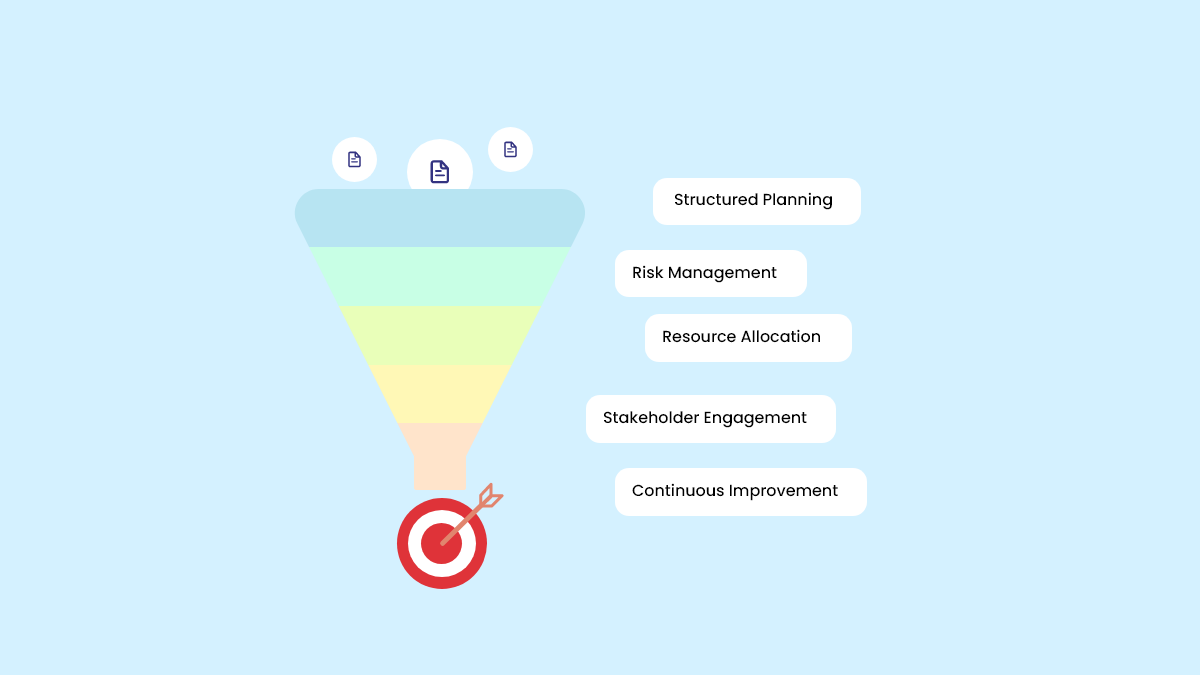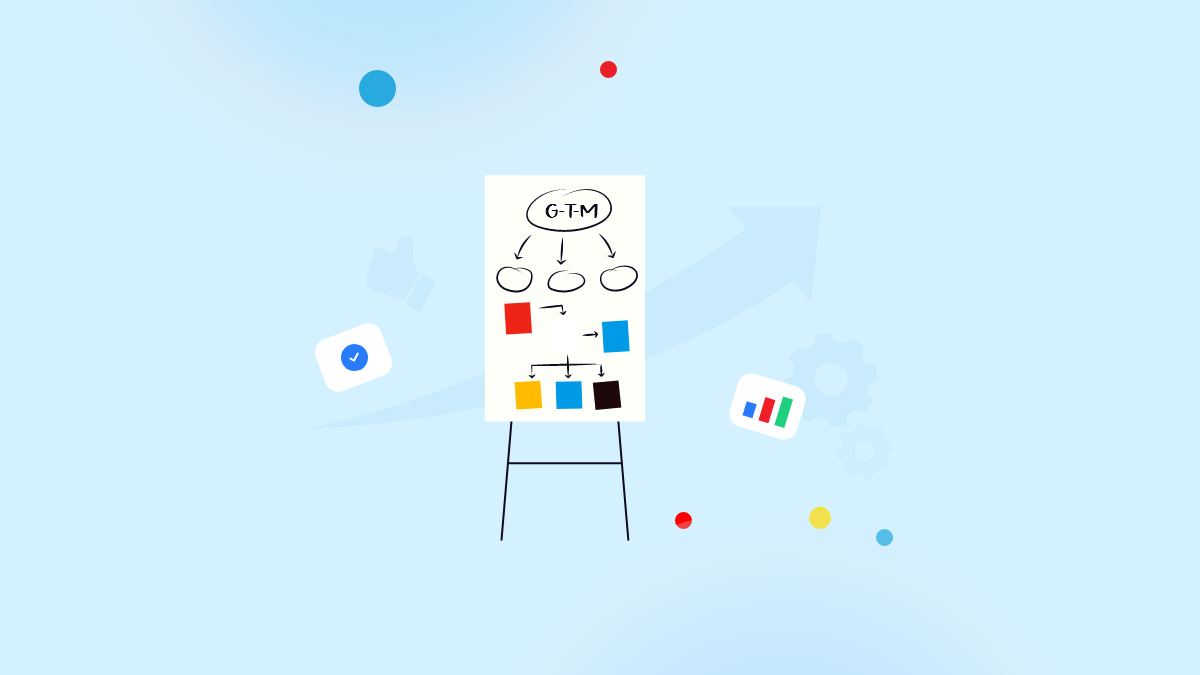 Introduction: Why Structured Execution Wins Every Time
Introduction: Why Structured Execution Wins Every Time
You’ve seen it before: a bold idea, a talented team, and plenty of resources—only for the project to miss its mark. It’s not a lack of vision that sinks most initiatives. It’s the absence of structure.
According to the Project Management Institute (PMI), poor planning and unclear objectives are among the leading causes of project failure across industries. Great ideas demand more than inspiration—they need disciplined execution. That’s where the Phase Gate (or Stage Gate) model comes in.
Originally popularized in product development and R&D environments, the Phase Gate model breaks the chaos of project execution into distinct, manageable phases—each separated by a decision “gate.” At every gate, progress is reviewed, risks are evaluated, and decisions are made about whether to proceed, adjust, or stop. This process not only improves outcomes but also aligns efforts with strategic goals from start to finish.
For companies that want to scale without sacrificing control, this structured approach is invaluable. Platforms like Planally, a no-code workflow automation solution, bring the power of the Phase Gate model into real-world operations—making it easier for teams to collaborate, monitor, and adapt as projects evolve. By translating complexity into clarity, tools like Planally help ensure that good ideas become successful outcomes.
What Is the Phase Gate Model? (A Quick Primer)
The Phase Gate model—also known as the Stage Gate process—is a structured project management approach that divides an initiative into distinct phases. At the end of each phase, teams must pass through a “gate,” which is essentially a decision checkpoint. These gates are moments where stakeholders evaluate progress, validate whether the project still aligns with strategic goals, and determine whether to continue, revise, or terminate the effort. This ensures that only viable and well-aligned initiatives move forward.
Originally popularized in product development and research-heavy industries, the model is now widely adopted in R&D, engineering, and innovation management, where complexity, risk, and stakeholder involvement are high. It’s particularly useful in environments where resource investment needs to be carefully monitored, and where outcomes must be tightly aligned with business objectives.
 At its core, the Phase Gate model helps teams transform sprawling ideas into structured, measurable steps. Each phase typically focuses on a key part of the process—such as scoping, planning, development, testing, and launch. This segmentation helps organizations stay focused, enforce accountability, and course-correct early. This framework not only clarifies what needs to be done and when, but also ensures that projects don’t drift aimlessly or miss crucial milestones.
At its core, the Phase Gate model helps teams transform sprawling ideas into structured, measurable steps. Each phase typically focuses on a key part of the process—such as scoping, planning, development, testing, and launch. This segmentation helps organizations stay focused, enforce accountability, and course-correct early. This framework not only clarifies what needs to be done and when, but also ensures that projects don’t drift aimlessly or miss crucial milestones.
Modern platforms like Planally take the principles of the Phase Gate model and bring them to life through visual, no-code workflows that support cross-functional collaboration—making it easier for teams to stay aligned and on track without the need for complex tooling or steep learning curves.
The 5 Key Benefits of Using the Phase Gate Model
1. Clarity and Structure at Every Turn
The Phase Gate model introduces a disciplined rhythm to even the most complex projects by dividing them into clearly defined stages—typically scoping, planning, development, testing, and launch. Each phase has its own objectives, deliverables, and evaluation criteria, helping everyone stay aligned on what’s expected and when.
Instead of operating in a fog of shifting priorities or vague expectations, teams follow a shared roadmap. Confusion is replaced with clarity, making it easier to communicate progress, set realistic timelines, and deliver results with confidence.
Workflow automation platforms like Planally bring this model to life visually. With Planally, teams can map each phase, assign tasks, and track progress—all without writing a single line of code. The result? Fewer surprises and more confidence, every step of the way.
2. Early Detection of Risks
One of the most powerful aspects of the Phase Gate model is its ability to surface potential issues before they snowball. Each gate acts as a critical checkpoint where a project’s progress, alignment with objectives, and feasibility are rigorously reviewed.
By pausing to ask “Are we still on track?” before moving forward, teams catch misaligned goals, scope creep, or resourcing gaps before reaching high-investment stages like development or launch. This proactive evaluation significantly reduces the risk of late-stage failure and ensures that course corrections are timely and cost-effective.
Rather than reacting to problems, teams anticipate them—and that’s the kind of resilience modern projects demand.
3. Smarter Resource Allocation
In many organizations, resources are finite but ambitions are not. The Phase Gate model helps balance the two by ensuring only viable projects receive further investment.
At every gate, teams assess whether the project still justifies the resources it’s consuming. This checkpoint discipline means less budget bleed on doomed initiatives and more strategic focus on high-impact opportunities. In addition, this model promotes more intelligent resource planning and helps prevent burnout and inefficiencies.
Tools like Planally make this real-time resource reallocation seamless. As priorities evolve, leaders can dynamically reassign personnel and timelines across phases—without disrupting flow or transparency.
4. Better Decisions, More Accountability
Each gate review is a moment for objective, data-informed decision-making. It’s not about hunches—it’s about clarity. Are the deliverables complete? Are the goals still aligned with business needs? Are we ready to move forward?
By requiring clear criteria to be met before advancing, the model enforces accountability and keeps teams focused. Everyone knows who’s responsible for what, and what needs to be done before the next step.
With Planally, progress and performance are easy to track across all phases—making it simpler for managers to step in, support where needed, and ensure nothing slips through the cracks.
5. Higher Success Rates and Better Outcomes
At its core, the Phase Gate model is designed to increase a project’s chances of success. By ensuring continuous alignment, structured feedback, and early course correction, the methodology builds in quality assurance and strategic focus.
Projects don’t just survive—they evolve. If market conditions shift or stakeholder needs change, the model allows for responsive adjustments without jeopardizing the entire initiative. This adaptability results in higher-quality outcomes and greater stakeholder satisfaction.
It’s not about rigid control—it’s about smart navigation. With a platform like Planally, teams can adapt in real-time, stay informed, and execute with clarity—turning complexity into consistency and ideas into success stories.
Who Should Use the Phase Gate Model?
The Phase Gate model isn’t just for large corporations with sprawling R&D departments—it’s for any organization that needs structure, accountability, and clarity across high-stakes initiatives. Whether you’re building a product, streamlining procurement, or launching a digital transformation effort, this methodology offers a disciplined path from concept to completion.
Industries that operate in highly regulated or innovation-driven environments—like pharmaceuticals, engineering, aerospace, and financial services—have long used the Phase Gate model to reduce risk and increase project predictability. But its benefits are just as compelling for teams in legal, compliance, and procurement functions who manage complex workflows with critical checkpoints. The model is especially valuable for ensuring that governance and resource alignment are maintained at every stage of a project, making it easier to respond to both internal and external pressures.
Product development teams, in particular, thrive under this approach. The clearly defined phases allow for iterative development, structured feedback loops, and better alignment between cross-functional teams. This enables organizations to make informed go/no-go decisions at each critical juncture, ensuring that what gets built is not only feasible but strategically sound. With phase-based checkpoints, teams can adapt quickly to new insights or shifting priorities—without derailing the entire project.
But applying the Phase Gate model well requires more than just a good plan—it demands real-time visibility, collaboration, and adaptability. That’s where tools like Planally come in. Designed to follow the Phase Gate methodology, Planally transforms the model from a theoretical framework into a living, breathing part of your team’s workflow. By providing a no-code platform that mirrors the phased structure, it ensures that every gate, review, and resource decision happens with clarity and speed.
Whether you’re leading innovation or enforcing compliance, if your projects can’t afford to fail, the Phase Gate model deserves a place in your toolbox.
 Final Thoughts – Turning Theory Into Practice
Final Thoughts – Turning Theory Into Practice
The Phase Gate model isn’t just a project management theory—it’s a framework that works. From global engineering firms to fast-moving product teams, this approach has quietly powered some of the most successful initiatives in recent years. Why? Because it brings order to ambition—ensuring that great ideas don’t fall apart in execution.
If you’re new to the methodology, don’t worry. You don’t need to overhaul your entire project ecosystem overnight. Start small. Pick one upcoming initiative—maybe a product launch or internal process redesign—and structure it around the five classic gates: scoping, planning, development, testing, and launch. Use this pilot to observe how decisions improve, how risks are spotted sooner, and how much smoother your team operates when everyone knows exactly where they stand.
Need help putting it into motion? That’s where platforms like Planally come in. Designed with the Phase Gate model in mind, Planally lets you automate approvals, monitor progress, and align every stakeholder—without writing a single line of code. It’s no-code, no-fuss project control that still respects your need for structure.
If you’re ready to bring structure and success to your next project—without drowning in complexity—Planally can show you how.




